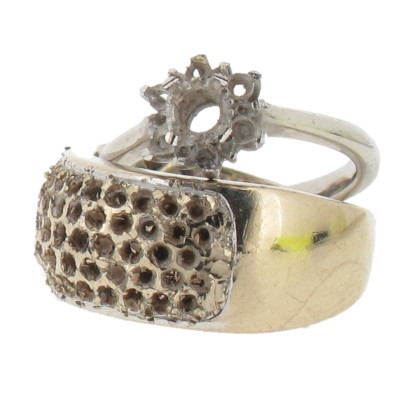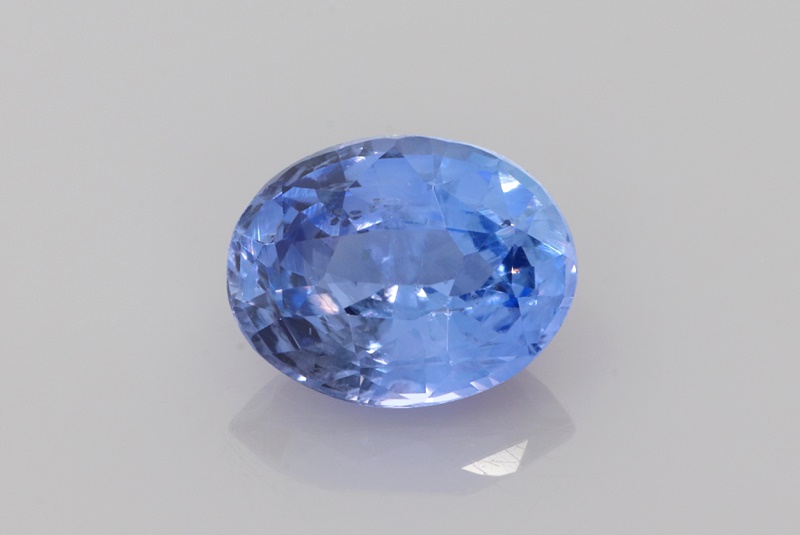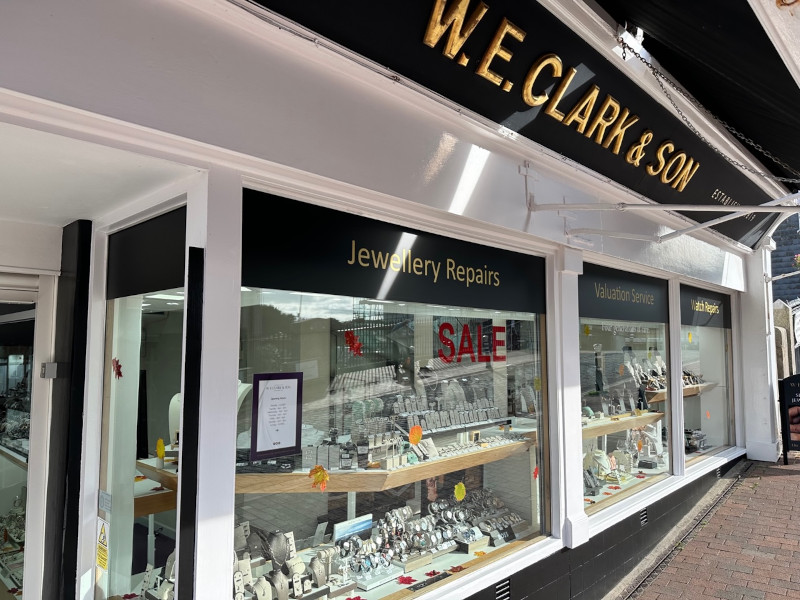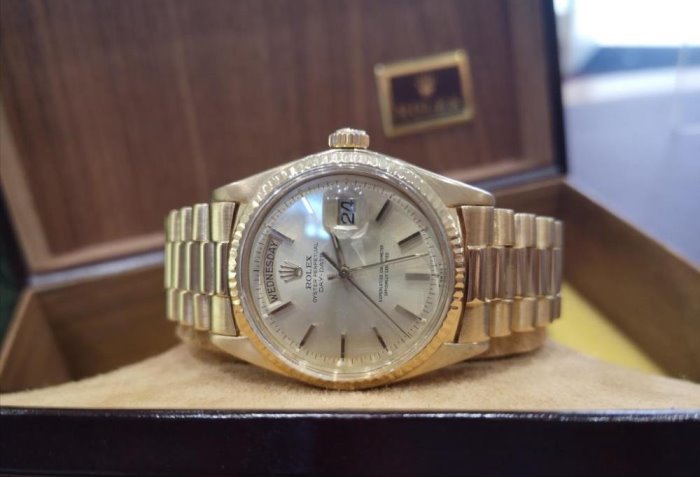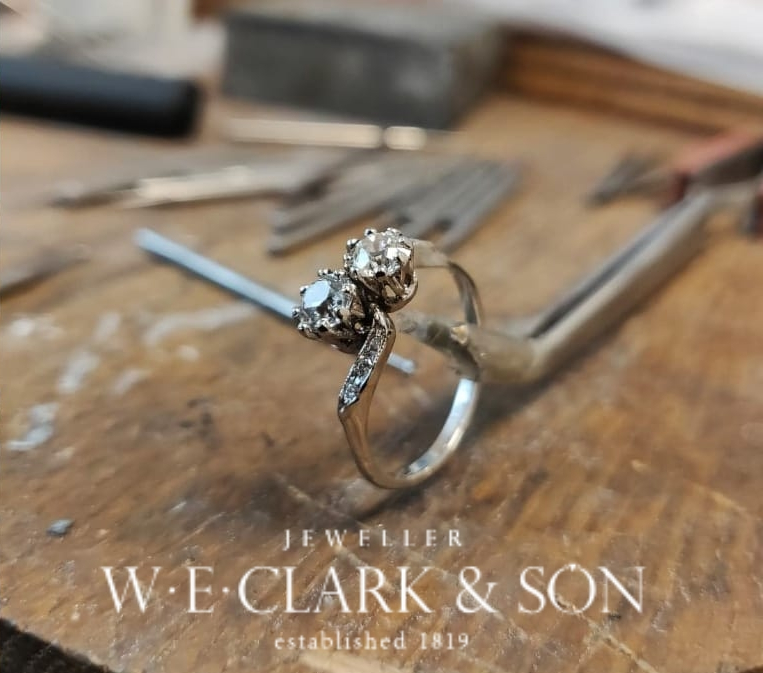Diamond and Sapphire Ring Restoration
In June of 2022 during a consultation, I was presented with a very interesting challenge and one that turned out to be fascinating for everyone involved. Our customer was looking for jewellery restoration for a diamond and sapphire ring.
The customer brought in a very special ring for us to have a look at. At the centre of the ring was a 1.01 carat round modern brilliant cut diamond, with two round cut blue sapphires. The ring was clearly very loved and had been enjoyed over many years. My task was to advise on the security of the gemstones, and I could see that the claws holding the stones needed repair. Then whilst looking, something else caught my eye, and I took the ring to the microscope for closer inspection.
My initial thoughts were confirmed, and the diamond had suffered severe damage to the pavilion, which is the underside of the stone. I could see an unusual shape while inspecting, which I have circled in black in the image below. This unusual shape was a large section of the diamond that was missing due to damage. What had happened is that a section of the diamond had cleaved away from the rear, resulting in around 15% of the stone being lost.
Many customers say to me 'Diamond is the hardest of all materials known to man' well it is but this does not consider diamonds perfect cleavage. Cleavage is defined as the parting of a material along predefined planes within the crystal structure. Given enough of a knock, then a material such as diamond can then cleave - and this is exactly what happened to our customer’s beloved diamond ring. So, while diamonds are incredibly durable, they can be damaged in certain situations and unfortunately this is what happened to our customer’s ring.
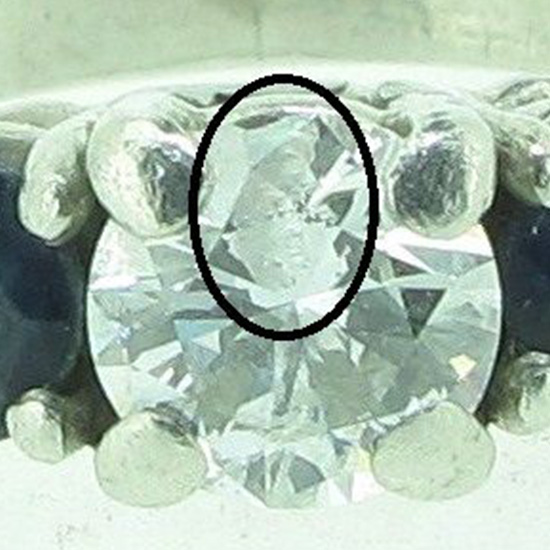
This was of course difficult to report back to my customers, who were totally unaware of the damage at this point, as it is difficult to spot with a naked eye. When I explained that a section of the diamond had come away, they were shocked. Once the news had sunk in, I explained the options to remedy the accidental damage to the diamond. The diamond could be repolished, but this would mean that a considerable amount of the carat weight of the diamond would be lost. The other option was to source a replacement diamond for the ring and reset it within the mount.
The customer decided that they wanted the ring to have a diamond in it that was 1.01 carat, so this mean the replacement was the only option. We looked at the mound and the sapphires, both of which were very worn as well, and the customers decided to have a replacement mount made and for two new sapphires to be set alongside the newly sourced diamond.
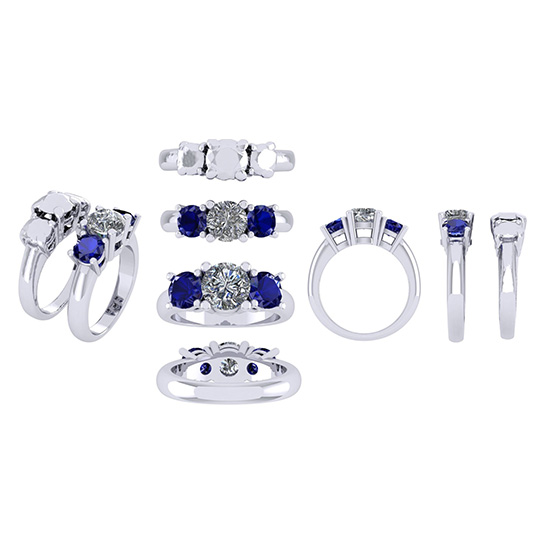
In circumstances such as this, the main advantage of using an experienced gemmologist such as myself is that I offer the selection of gemstones, making sure they pass my keen and exacting eye for detail. I found the diamond which was a beautiful 'D' colour diamond, which is the best colour grade - as in the least colourless in this case. The two beautiful ceylon sapphires were of the finest quality.
The new mount we used the latest technology to produce some drawings using CAD (Computer Aided Design) and then once the design was agreed we created the ring in platinum.

The final result was truly breath-taking. Most importantly, upon presentation to my customers, they were absolutely blown away. We are always honoured when customers trust us with their treasured jewellery, and we strive to deliver perfect results each and every time. We were delighted that our customers loved their restored diamond and sapphire ring.

